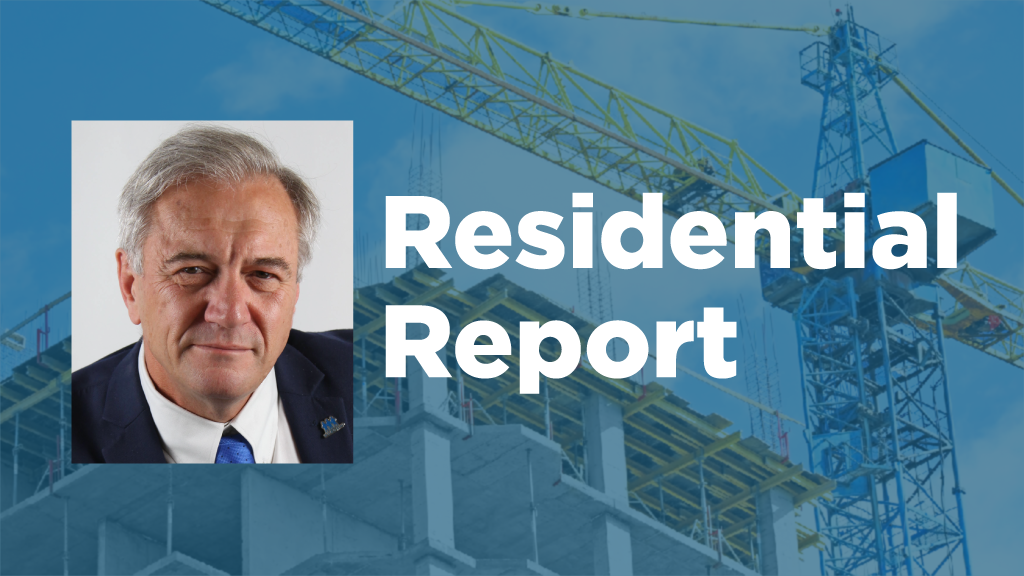Digital twinning is being increasingly used in the automotive, health care, systems engineering and aerospace industries. Some municipalities around the globe are now using the futuristic technology to create smart cities.
Moving forward, the expectation is that digital twinning will play a much bigger role in the Canadian construction industry.
By all accounts, the digital twin market is growing.
Paul Smetanin, president of the Canadian Centre for Economic Analysis, spoke at RESCON’s annual general meeting recently and indicated the global digital twinning market is expected to be $48.2 billion by 2026 — up from $3.1 billion in 2020.
The technology could be a key tool to help tackle Ontario’s housing supply crisis as it enables developers, architects and engineers to quickly test changes that can speed-up and improve a new build.
A digital twin is a virtual model in a computer that is designed to accurately reflect a physical object, space or region. Like artificial intelligence a few years ago, digital twin technology is moving from highly specific applications into becoming a widespread best practice of management.
The technology allows designers and developers to see what will happen when they make changes to a building. It can be used to improve growth planning on a macro scale. By providing a digital representation of a real-world scenario, it can help to address housing and infrastructure needs of communities and enable planners and designers to make changes that will improve their cities.
The City of Los Angeles, for one, is employing digital twins to model transportation movement and activity, such as ride-sharing and autonomous drones, to better plan its mobility infrastructure.
By recreating a replica of a building in a virtual form, designers and planners can study changes in behaviour and building interaction when plans are revamped.
Information about the structure being built is collected using laser scanners, sensors and other Internet of Things devices and used with Building Information Modeling (BIM). Using the technology, stakeholders can view in real-time the status and condition of the assets under construction.
Stakeholders can experiment digitally to improve the structure and better balance their labour and costs.
With a renewed focus on decarbonization in the construction industry, digital twins will allow stakeholders to run scenarios to get a handle on the impacts of using different materials to construct buildings.
The concept of digital twinning has been around for some time. The idea was first put into practice nearly 53 years ago when an explosion occurred aboard Apollo 13 and damaged the engine.
NASA used its telecommunications technology and fed data into simulators to reflect the condition of the crippled spacecraft and run scenarios that would eventually bring the astronauts home.
As we know, the mission was a success and NASA’s greatest disaster turned out to be its greatest triumph.
In Ontario, AECO Innovation Lab is partnering with four Canadian universities across the country on a $1.32-million One Ontario project to explore technical challenges that regulatory agencies must resolve to accommodate the creation of digital twins.
The aim of the project is to spur innovation and digital transformation in the architecture, engineering and construction and government sectors. The project will also look at the economic, environmental and social challenges that can be addressed by digital twin technology.
The novel venture, being funded by AECO along with the Mitacs Accelerate Grants Program, will explore how digital twinning can help with visualizing land and building investments, predicting affordable housing needs, developing sustainable cities and aiding in municipal operations.
In our recent budget submission to the Ontario government, we asked that the province support the One Ontario platform and match the funding so the project can be implemented in other regions.
With the provincial government committed to building 1.5 million homes over 10 years, there is a need to find ways of building homes better and faster. Digital twinning can play a key role in that effort.
Richard Lyall is president of the Residential Construction Council of Ontario. He has represented the building industry in Ontario since 1991. Contact him at media@rescon.com.










Recent Comments